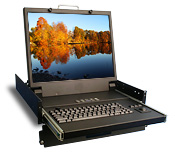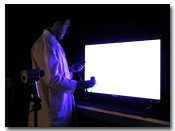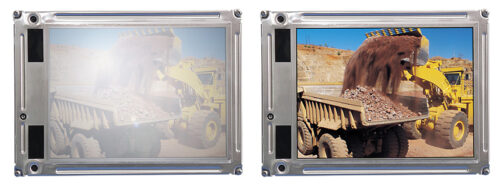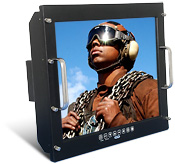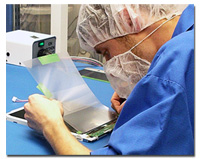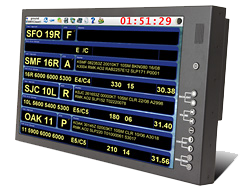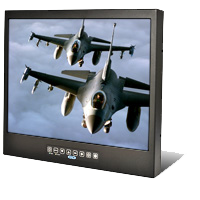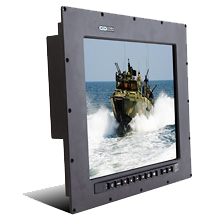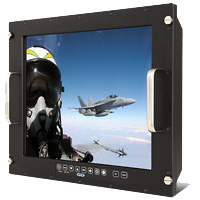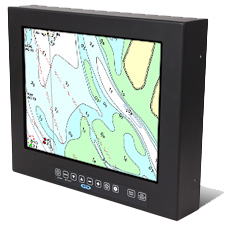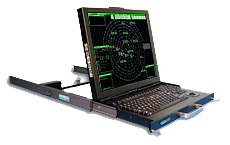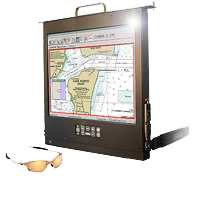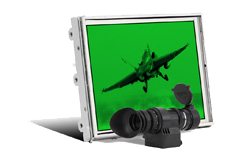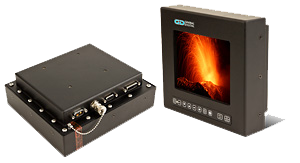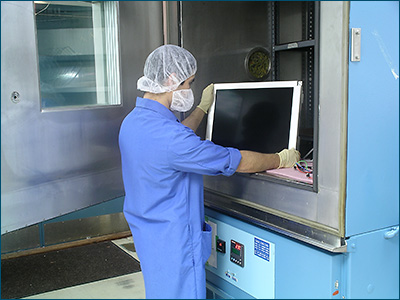Enhancements Overview
Each LCD, OLED and Plasma display part number, without regard to manufacturer or size, has its own unique “personality” pertaining to optical performance. General Digital Optical Bonding Laboratories understands this challenge and has successfully implemented test and characterization methods. This allows us to better understand the display’s capabilities and potential for improvement. We have on our premises an Optical Characterization Laboratory for obtaining photometrics on any given flat panel display.
Luminance
In our Optical Characterization Laboratory, General Digital Optical Bonding Laboratories obtains brightness metrics of your display under dark room conditions and three different simulated daylight conditions. We then do an evaluation of the OEM films in the LCD, OLED or Plasma display and provide analysis on the best configuration based on your expected operating condition. We perform multiple iterations of backlight film modifications and submit the data to you, along with our analysis of what the metrics indicate.
Contrast
In addition to our luminance measuring, General Digital Optical Bonding Laboratories also provides you with empirical contrast ratios based on the multiple lighting conditions utilized in the luminance measuring process. This assists in the decision process of which configuration will best suit your application.
Benefits
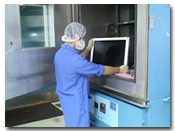
- Increase brightness up to 100% with brightness enhancement films alone
- Improve display contrast and readability
- Improve display clarity and image quality
- Superior uniformity
- Improved operating temperature range and brightness
Options
General Digital Optical Bonding Laboratories offers both passive and active backlight modifications to improve sunlight readability. Our most efficient and cost-effective solution is the GenFlective display, a hybrid of transflective and passive enhancements. We also offer a standard transflective display, which incorporates a highly reflective backlight that reflects ambient light back out of the display. Thirdly, we provide the traditional value-add backlight solution, an active enhancement featuring your choice of LED or NVIS backlight technology.
Passive Enhancements
- Consider our own GenFlective™ Technology (PDF)
- Requires no more power than OEM panel
- Dissipates no more heat than OEM panel
- Simplifies integration of value-add display
- Easier to address cooling due to low power
- Can often be combined with other passive enhancements (optical bonding) or active enhancements (sunlight/daylight readable backlights/edge lights)
- Typical enhancement of OEM luminance of 20% to 100%
- Contrast enhancement typically measured in orders of magnitude rather than percentages
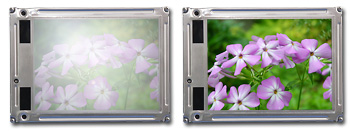 A GenFlective-enhanced LCD, OLED or Plasma display is a display that General Digital Optical Bonding Laboratories has altered, using passive enhancements, to improve the brightness (transmissive and/or reflective) and/or the contrast of the display. Although each display has its own personality, due to differences in design, manufacturing techniques and in the stock film stack, we can typically enhance the performance of an OEM panel utilizing Optical Management Films, Polarizers and Diffusers, and a multitude of films and coatings (Contrast Enhancement, Index Matched, Antireflective, etc.).
A GenFlective-enhanced LCD, OLED or Plasma display is a display that General Digital Optical Bonding Laboratories has altered, using passive enhancements, to improve the brightness (transmissive and/or reflective) and/or the contrast of the display. Although each display has its own personality, due to differences in design, manufacturing techniques and in the stock film stack, we can typically enhance the performance of an OEM panel utilizing Optical Management Films, Polarizers and Diffusers, and a multitude of films and coatings (Contrast Enhancement, Index Matched, Antireflective, etc.).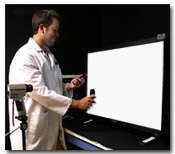 General Digital Optical Bonding Laboratories characterizes your display under dark room conditions and three different simulated daylight conditions. We then do an evaluation of the OEM films in the LCD, OLED or Plasma display and modify this configuration as we deem reasonable. We will do up to four iterations of backlight film modifications and submit the data to you, along with our analysis of what the data tells us.
General Digital Optical Bonding Laboratories characterizes your display under dark room conditions and three different simulated daylight conditions. We then do an evaluation of the OEM films in the LCD, OLED or Plasma display and modify this configuration as we deem reasonable. We will do up to four iterations of backlight film modifications and submit the data to you, along with our analysis of what the data tells us.
Transflective Panels
- Although they are designed to reflect ambient light back out the display to augment its performance in direct sunlight, transflective panels have insufficient transmissive luminance (typically ~200 nits) to be considered usable in diffuse lighting conditions where direct sunlight is not available (e.g., cloudy or rainy days).
- Additionally, transflective panels are only available in a limited range of display sizes and resolutions.
Active Enhancements
As more of today’s applications require brighter displays, the shortcomings of CCFL backlights become more apparent. In response to this challenge, LED backlighting has been developed to achieve and maintain the required brightness levels of today’s displays.
Advantages of LED Backlights:
- Sunlight readable, standard luminance, NVIS-compatible options available
- CCFL edge rail replacement with LED or complete light box redesign options
- High color gamut achievable with high power LED
- Lower EMI (Electromagnetic Interference) Emissions
- Lower Power Consumption
- Extended Life Expectancy
- Lower Heat Emissions
- Potentially Lower-Profile-Than-Typical Backlight Replacement Techniques
- GD design meets MIL-DTL-901E, MIL-STD-810F, MIL-STD-461E
- Readily dimmable to very low levels without flicker
- Wide thermal range without heaters
- Any size, any panel, any brightness – Below are a few sample configurations equipped with LED backlights to enhance sunlight readability.
General Digital’s extensive variety of monitor kits and industrial-/military-grade monitors provide our customers with a solution for virtually any type of application or environment.
In addition to being able to request integration of our NVIS- and NVG-compatible LED backlit LCDs into our monitor products, customers may also request the integration of our sunlight readable backlit LCDs, OEM LCDs with LED backlights or third-party enhanced LCDs.
Please feel free to contact a Sales Engineer contact a Sales Engineer to discuss your options and configuration requirements.
Sunlight Readable LCD Displays from General Digital
Selecting an LCD monitor for “daylight” jobs isn’t an easy task. But don’t worry–it’s not your fault. On most typical flat screen computer monitors, the LCD panels only produce between 200 and 350 nits of backlighting. For daylight and sunlight readability, this is not enough luminance to create the high contrast necessary to make monitor displays visible against glare.
Daylight Readable and Sunlight Readable LCD technology takes backlighting to the next level. In order to be properly viewable during the day, whether outdoors or indoors in high ambient lighting, General Digital configures its daylight readable flat panel screens to produce at least 343 nits of luminance. To guarantee color visibility in direct sun, our sunlight readable flat panel displays produce at least 686 nits of luminance.
Thanks to extra effort and extensive research into outdoor display visibility, General Digital has created a set of industry-leading high brightness monitors. Most of our display products are engineered go wherever you need them and work flawlessly for years—decades even.
With some models UL and FCC certified and upholding the standards of military requirements, General Digital’s monitors with the sunlight or daylight readable option are high quality and durable.
Select a sunlight readable monitor below that will best suit your needs. Mousing over the product name reveals a photo and brief description, and the link takes you to a page with detailed information.
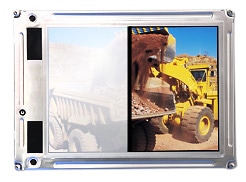

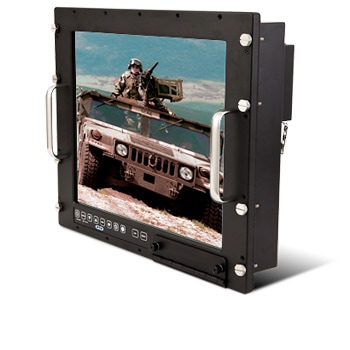
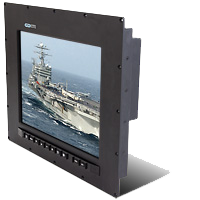
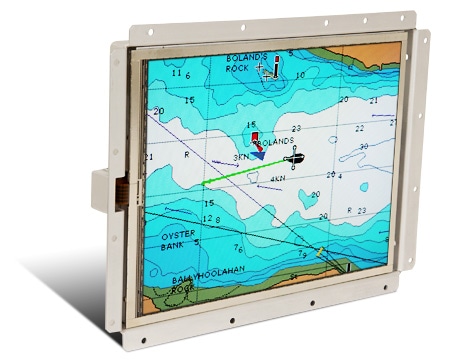
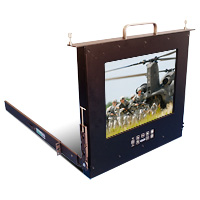


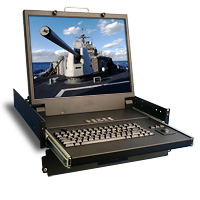

Enhanced Light Guide
General Digital Optical Bonding Laboratories is well qualified to enhance your existing LCD, OLED, Plasma or other display type. We can also provide a complete flat panel package, ready to drop in right out of the box.
General Digital has designed dozens of value-add LCD displays, featuring our NVIS LED backlights (edge-lit and direct-lit), light optimization films and optical enhancements/overlays.
While General Digital’s enhanced displays are available for purchase as a component (display only), they are also available for integration into most of our standard LCD monitor products and custom products, including:
Temperature and Humidity Testing Available on Contract
In response to the challenging needs of our diverse customer base, General Digital Optical Bonding Laboratories provides on-site thermal and humidty testing and data logging services. Many customers find themselves faced with meeting strict military, industrial, or harsh environmental requirements. Some of these requirements include
- MIL-STD-810F (paragraphs 501.4, 502.4, 507.4)
- ESS (Environmental Stress Screening)
- Solar Loading (for use in direct sunlight)
As more and more LCDs, OLEDs and Plasma displays find their way into outdoor applications, the need becomes far greater for them to not only be able to withstand severe temperature extremes (heat and cold) and solar radiation, but the flat panel display must also be readable when exposed to extreme optical conditions such as direct and indirect sunlight, glare and reflection. On an average sunny day, the illumination of ambient daylight is approximately 30,000 nits. Therefore, brightness should be over 900 nits to get a clear image for an outdoor application.
Most off-the-shelf LCDs, OLEDs and Plasma displays are not properly equipped to handle all of these requirements. General Digital Optical Bonding Laboratories offers several brightness enhancement solutions to meet/exceed our customer’s requirements.


